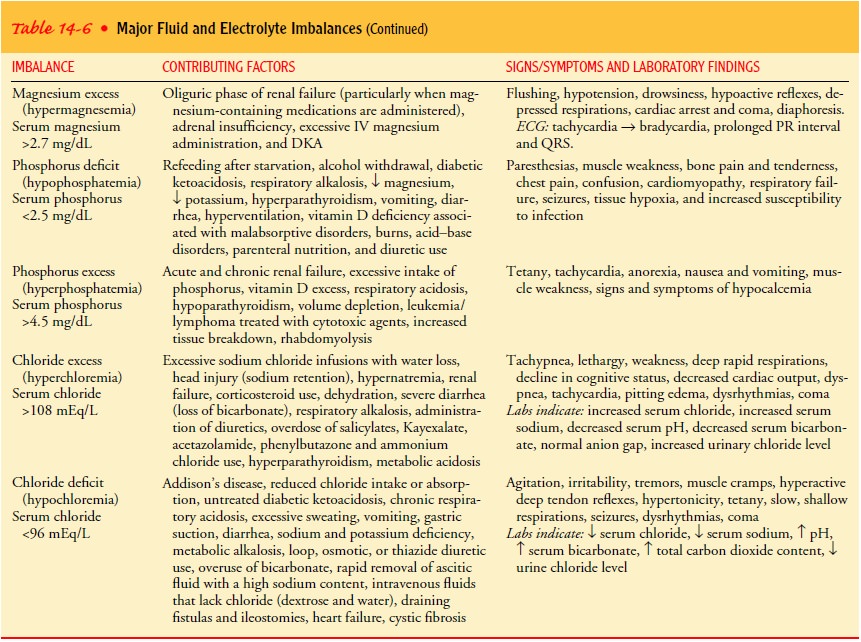Chapter: Medical Surgical Nursing: Fluid and Electrolytes: Balance and Distribution
Electrolyte Imbalances: Significance of Sodium
Electrolyte Imbalances
Disturbances in
electrolyte balances occur in clinical practice and must be corrected for the
patient’s health and safety. Table 14-6 summarizes the major fluid and
electrolyte imbalances that are described in the text. An example of an
electrolyte imbalance is an altered sodium balance.


SIGNIFICANCE OF SODIUM
Sodium is the most abundant electrolyte in the ECF; its concen-tration
ranges from 135 to 145 mEq/L (135—145 mmol/L). Consequently, sodium is the
primary determinant of ECF osmo-lality. Decreased sodium is associated with
parallel changes in os-molality. The fact that sodium does not easily cross the
cell wall membrane, plus its abundance or high concentration, accounts for its
primary role in controlling water distribution throughout the body. In
addition, sodium is the primary regulator of ECF volume. A loss or gain of
sodium is usually accompanied by a loss or gain of water. Sodium also functions
in establishing the electro-chemical state necessary for muscle contraction and
the trans-mission of nerve impulses.
Sodium imbalance occurs frequently in clinical practice and can develop under simple and complex circumstances. Sodium deficit and excess are the two most common sodium imbalances.
Related Topics